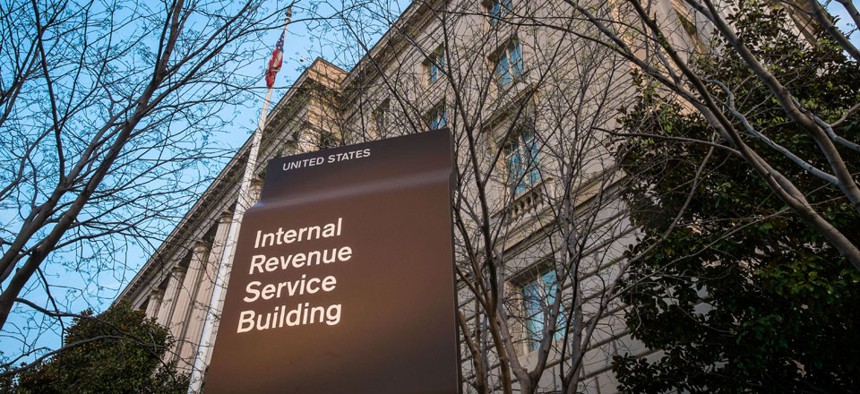When IRS Tech Projects Start to Slip, Congress is the Last to Know

The IRS building is seen in Washington. J. David Ake/AP File Photo
A few key tech projects at IRS are running over budget and behind schedule, and lawmakers are being left out of the loop, GAO said.
A massive IT project at the Internal Revenue Service to update the way the agency processes tax returns hit a rough patch nearly two years ago, falling nearly a year behind schedule and beginning to creep millions of dollars over budget.
But Congress was left in the dark about the program’s wayward tilt because of inadequate reporting by IRS officials, according a new Government Accountability Office report.
The IRS is spending millions to update its long patched-over and jury-rigged IT infrastructure, which Commissioner John Koskinen has likened to a Model T and parts of which date to the 1960s.
The agency is required to update Congress on the major IT projects it’s working on. But over the past few years, the IRS has made only “limited progress in improving the reliability and reporting” of cost, schedule and performance information of those projects, according to GAO’s latest report.
Most of the IRS’ major IT investments, it should be noted, meet or come pretty close to cost and schedule goals, according to the agency.
But a few key investments are running over budget and behind schedule, and lawmakers are being left out of the loop, GAO said.
One of those major projects is the Customer Account Data Engine -- known as CADE 2 -- which aims to replace an antiquated system for processing tax returns that relied on mountains of magnetic tape drives with a modern relational database.
The agency finished a “key phase” of the CADE 2 project 10 months behind schedule and exceeding original costs by more than $183 million -- details that were never clearly reported to Congress, according to GAO.
Since 2012, the IRS has been required to submit quarterly reports to Congress on the cost and development efforts of its major IT investments as well as when costs deviate from initial estimates.
But in those reports, the agency is only reporting cost overruns and schedule slippages that occur in a given fiscal year, not over the long haul, making it difficult for Congress to get the full picture on the health of a program, according to GAO.
For example, by the time the first phase of CADE 2 wrapped up in November 2012, it was more than $82 million over budget and the transition to phase two was delayed because of unfinished work, precipitating the creation of a “1.5” phase and leading to more than $101 million in unexpected additional costs.
That was a 180-degree turn for a program that had once been singled out auditors as a successful federal IT program. But GAO said none of those overruns or delays were identified in the agency’s reports to Congress.
The problem is not limited to the CADE program.
Another project, a fraud-detection effort, called the “return review program,” has exceeded costs by $86.5 million and has yet to deliver functionality originally scheduled for September 2012. Two other programs have been paused or canceled.
At issue, seems to be a disagreement over the meaning of the word “cumulative.”
IRS officials told auditors they believe they’ve already addressed GAO’s recommendations about reporting cumulative information to Congress. But GAO said IRS continues to provide information segmented by the fiscal year, not cumulative information over the life of a project.
“The magnitude of some of the changes to plans we identified underscores the criticality of implementing our prior recommendations in improving the transparency of congressional reporting so Congress has the appropriate information needed to make informed decisions,” GAO concluded.
NEXT STORY: Meet FTC's Chief Geek


